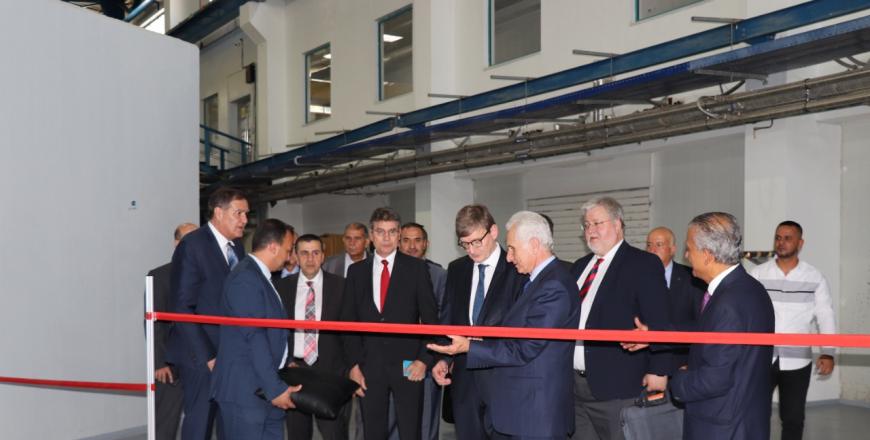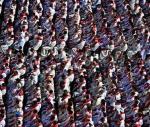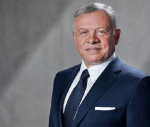You are here
SESAME’s scientific breakthrough could help fight pollution
By Mohammad Ghazal - Nov 26,2017 - Last updated at Nov 26,2017
AMMAN — After producing synchrotron light in the X-Ray Fluorescence beamline for the first time in the Arab and Islamic world, Jordan’s Synchrotron-light for Experimental Science and Applications in the Middle East (SESAME) will next year start an experiment on environmental pollution in the Jordan River valley with a view to improving public health in the area.
The experiment follows the “great success” by scientists at the pioneering SESAME light source that saw First Monochromatic Light through the XAFS/XRF (Xray Absorption Fine Structure/X-Ray Fluorescence) spectroscopy beamline, signalling the start of the laboratory’s experimental programme.
“This beamline, which for the first time produced synchrotron light in Jordan and in the entire Arab and Islamic world,” ushers in a new era of advanced scientific research in Jordan as more beamlines are to be produced over the course of the coming years enabling research in various fields,” Director General of SESAME Khaled Toukan told The Jordan Times over the phone on Saturday.
Among the subjects likely to be studied in early experiments include studies aimed at identifying new drugs for cancer therapy, and cultural heritage studies ranging from bioarcheology — the study of ancestors — to investigations of ancient manuscripts. The very first experiment on soil contamination, which is expected to be conducted in the first-half of 2018, will be performed in the framework of a collaboration with the Royal Scientific Society of Jordan.
“This is a great achievement for Jordan and ME region,” said Toukan.
“SESAME is a major scientific and technological addition to research and education in the Middle East and beyond and are proud that the young scientists, physicists, engineers and administrators who have built SESAME, come for the first time from this part of the world.”
This beamline, SESAME’s first to come on stream, delivers X-Ray light that will be used to carry out research in areas ranging from solid state physics, chemistry, geology to environmental science and archaeology, SESAME said in a statement e-mailed to The Jordan Times on Saturday.
“After years of preparation, it’s great to see light on target,” said XAFS/XRF beamline scientist Messaoud Harfouche.
“We have a fantastic experimental programme ahead of us, starting with an experiment to investigate heavy metals contaminating soils in the Jordan River Valley region,” Harfouche said in the statement.
The initial research programme will be carried out at two beamlines, the XAFS/XRF beamline and the Infrared (IR) spectromicroscopybeamline that is scheduled to join the XAFS/XRF beamline this year.
Both have specific characteristics that make them appropriate for various areas of research. A third beamline, in this case devoted to materials science, will come on stream in 2018.
“Our first three beamlines already give SESAME a wide range of research options to fulfil the needs of our research community,” said SESAME Scientific Director Giorgio Paolucci. “The future for light source research in the Middle East and neighboring countries is looking very bright!” he added.
The fourth Macromolecular Crystallography beam line, under construction through a fund from the Jordan Scientific Research Fund, is expected to be operational in 2019.
First Light is an important step in the commissioning process of a new synchrotron light source, but it is nevertheless just one step on the way to full operation.
The SESAME synchrotron is currently operating with a beam current of just over 80 milliamps, while the design value is 400 milliamps. Over the coming weeks and months as experiments get under way, the current will be gradually increased.
“On behalf of the SESAME Council, I would like to congratulate the SESAME staff on this wonderful milestone,” said president of the council, Rolf Heuer. “SESAME is a great addition to the region’s research infrastructure, allowing scientists from the region access to the kind of facility that they previously had to travel to Europe or the US to use.”
Related Articles
SALT — The International Centre for Synchrotron-Light for Experimental Science and Applications in the Middle East (SESAME) project on Thurs
AMMAN — On Monday at 1:21pm, scientists successfully delivered the first monochromatic X-ray beam to the Materials Science (MS) beamline at
AMMAN — The Helmholtz-SESAME Beamline (HESEB) for soft X-ray light designed and constructed by a consortium of five Helmholtz Research Centr


















